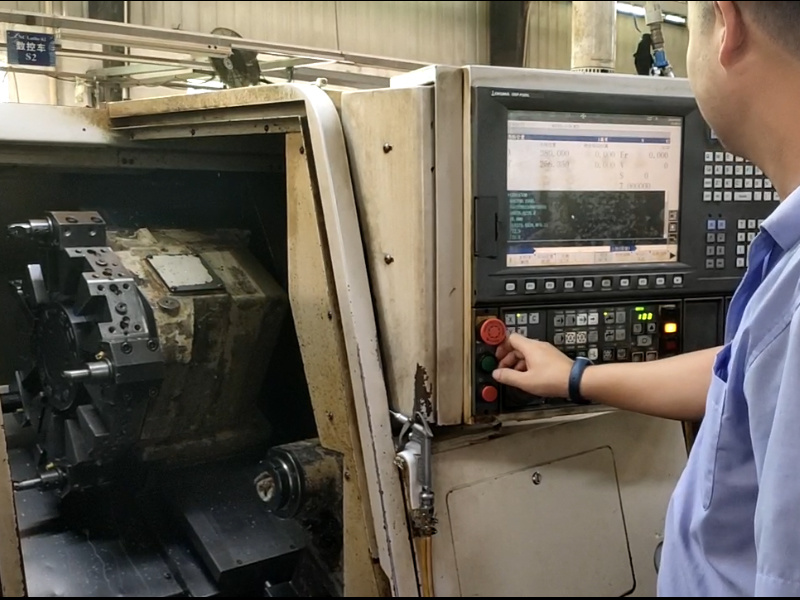Cast iron can be divided into:
① Gray cast iron. It has a higher carbon content (2.7% to 4.0%), with carbon mainly existing in the form of flake graphite, and the fracture surface is gray, commonly referred to as gray iron. It has a low melting point (1145 to 1250°C), a small shrinkage during solidification, and its compressive strength and hardness are close to that of carbon steel, with good shock absorption. It is used to manufacture structural components such as machine tool beds, cylinders, and boxes.
② White cast iron. It has a lower carbon and silicon content, with carbon mainly existing in the form of cementite, and the fracture surface is silvery white. It has a large shrinkage during solidification, making it prone to shrinkage cavities and cracks. It has high hardness and brittleness, and cannot withstand impact loads. It is often used as a blank for ductile cast iron and for making wear-resistant parts.
③ Ductile cast iron. Obtained by annealing white cast iron, the graphite is distributed in a nodular form, commonly referred to as ductile iron. Its microstructure is uniform, wear-resistant, and has good plasticity and toughness. It is used to manufacture complex-shaped parts that can withstand strong dynamic loads.
④ Nodular cast iron. Obtained by spheroidizing gray cast iron, the precipitated graphite is spherical, commonly referred to as spheroidal iron. It has higher strength, better toughness, and plasticity compared to ordinary gray cast iron. It is used to manufacture internal combustion engines, automotive parts, and agricultural machinery.
⑤ Vermicular cast iron. Obtained by treating gray cast iron with vermicularization, the precipitated graphite is worm-like. Its mechanical properties are similar to those of nodular cast iron, and its casting performance is between gray cast iron and nodular cast iron. It is used to manufacture automotive parts.
⑥ Alloy cast iron. Ordinary cast iron with a suitable amount of alloying elements (such as silicon, manganese, phosphorus, nickel, chromium, molybdenum, copper, aluminum, boron, vanadium, tin, etc.) added. The alloying elements change the matrix structure of the cast iron, giving it corresponding properties such as heat resistance, wear resistance, corrosion resistance, low-temperature resistance, or non-magnetic properties. It is used to manufacture components for mining, chemical machinery, and instruments.
Cast steel. Used for pouring castings. A type of casting alloy. Cast steel is divided into three categories: cast carbon steel, cast low-alloy steel, and cast special steel.
① Cast carbon steel. A type of cast steel with carbon as the main alloying element and containing a small amount of other elements. Cast low-carbon steel has a carbon content of less than 0.2%, cast medium-carbon steel has a carbon content of 0.2% to 0.5%, and cast high-carbon steel has a carbon content of more than 0.5%. As the carbon content increases, the strength and hardness of cast carbon steel increase. Cast carbon steel has high strength, plasticity, and toughness, and is cost-effective. It is used in heavy machinery to manufacture parts that bear large loads, such as frames for rolling mills and bases for hydraulic presses; in railway vehicles, it is used to manufacture parts that bear significant stress and impact, such as bolster, side frames, wheels, and couplers.
② Cast low-alloy steel. Cast steel containing alloying elements such as manganese, chromium, and copper. The total amount of alloying elements is generally less than 5%, providing significant impact toughness and better mechanical properties through heat treatment. Cast low-alloy steel has better performance than carbon steel, reducing part weight and increasing service life.
③ Cast special steel. Alloy cast steel refined to meet special needs, with a wide variety, usually containing one or more high amounts of alloying elements to achieve specific properties. For example, high manganese steel containing 11% to 14% manganese can resist impact wear and is often used for wear parts in mining and construction machinery; various stainless steels with chromium or chromium-nickel as the main alloying elements are used for parts working under corrosive conditions or at temperatures above 650°C, such as valve bodies, pumps, containers, or turbine casings in large power plants.
Although both are iron-carbon alloys, they exhibit different metallographic structures after crystallization due to the different percentages of chemical elements such as carbon, silicon, manganese, phosphorus, and sulfur. This results in many differences in mechanical and process properties. For example, in the cast state, the elongation, cross-sectional shrinkage, and impact toughness of cast iron are lower than those of cast steel; cast iron has better compressive strength and shock absorption than cast steel; the liquid flowability of gray cast iron is better than that of cast steel, making it more suitable for casting complex thin-walled structures; in bending tests, cast iron fractures in a brittle manner, while cast steel undergoes bending deformation. Therefore, they are suitable for casting different requirements of machine parts.






